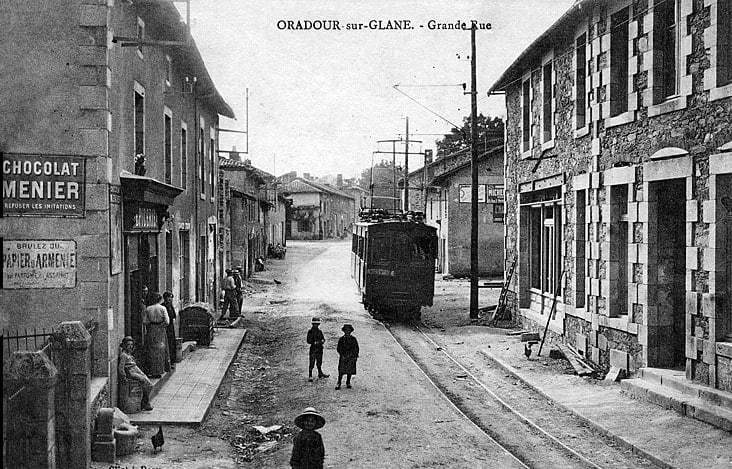Following the D-Day landing on June 6, 1944, German SS troops unleashed a flurry of grizzly massacres across Europe. The German troops took aim at French civilians, many of whom lived in peasant farm villages with a population of fewer than 1,000. The scenes make up a ghastly collection of extraordinary and sometimes extreme violence.
Gruesome details imply the acts were intended for public display more than pragmatic purposes. On some occasions, the soldiers arrived early in the morning. They would round-up villagers, and then decide whether to execute them or burn them alive, sometimes in the local church.

Tulle, France – June 9, 1944
It was the beginning of the end; the arrival of United States troops in Normandy signaled a German defeat was possible. By that time, German troops were exhausted in every sense of the word. They had been fighting on more than one front for prolonged periods of time. Their resources were running thin. At the other end of the spectrum, an American landing inspired the French resistance movement with a new, and much-needed, wave of hope. Covert resistance members included men and women throughout France, from tiny villages to bustling cities. The collective movement was made up of small resistance cells called, the Maquis — or, wild ones. The term relates to the wild, untamed forests that were used as safe havens by members of the resistance because they were thickly wooded, uninhabited, and lacked roads which made direct access difficult. In the wild forests, cell members would hold meetings and plot against their oppressors.
Many of the Maquis had been fighting since the French government capitulated and signed an armistice in 1940 that handed Germany total authority over France. Four years later, with the arrival of American soldiers, the Maquis upped their game. They aggressively moved against the Germans, who were by this point feeling uncertain. Germany had exhausted its manpower. It had troops scattered far and wide. Was it a boxing match, the Americans were putting in a new fighter in the ninth round? The Maquis and other groups of resistance throughout Europe did not hesitate to take advantage of what they hoped would be the last days of German domination. One of the first places the French resistance surged against the Nazis was in the Nouvelle-Aquitaine region in central France and in the picturesque town of Tulle in the south of France.
Soon after D- Day, on June 9, 1944, a determined Maquis group in Tulle plotted an attack and killed 40 Nazi soldiers. This set off an explosion of violence. Not 24 hours passed before Nazi SS troops arrived in Tulle. They brought in tanks that thundered and shook the earth and stationed them up and down the streets. The SS broke into small units. They ransacked homes and businesses demanding identity papers, proclaiming the exercise was nothing more than a routine identity check. It wasn’t. They were of course hunting for Maquis, and in doing so wanted to know the location of every male in Tulle.
They rounded up every male in the city between the ages of 16 and 60 and detained them. Of the 5,000, the SS negotiated with Tulle’s government over who would and would not be released. It was psychological terror. The SS made it clear, as punishment for the Maquis’ actions, 120 of the men would be executed. They even hung posters around Tulle outlining this as their intent. As the trading and bartering continued, friends saw themselves pawned. One would be released, and the other would take his place. More than half of the 5,000 were eventually released. From those who remained detained, the soldiers haphazardly picked out 99 who were executed by hanging. The rest were shipped to detention centers. Some ended up in Dachau concentration camp.

